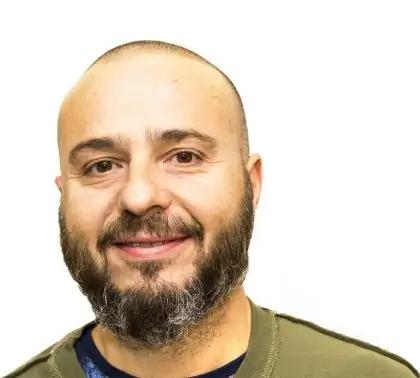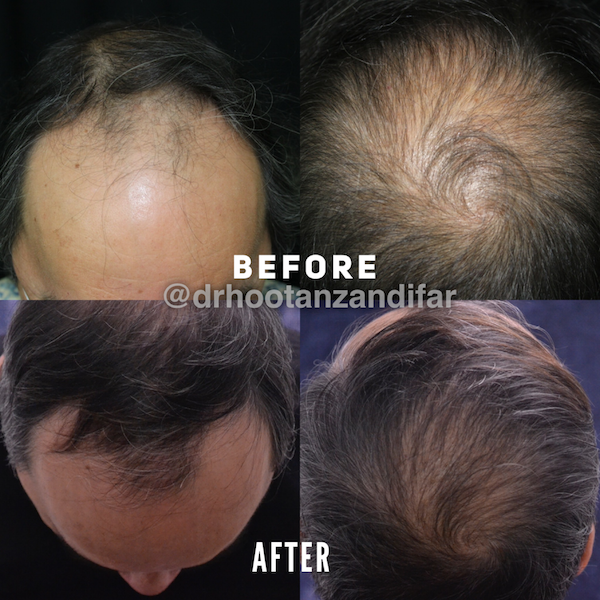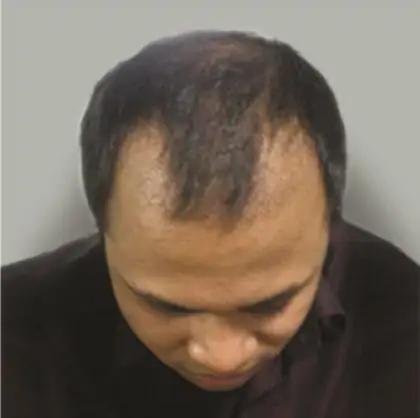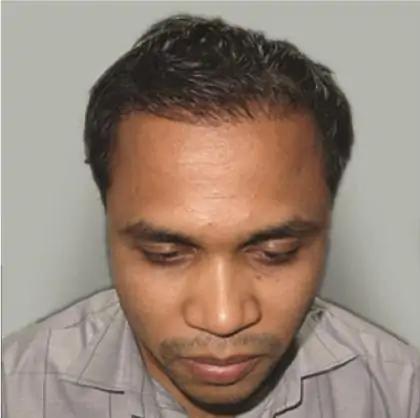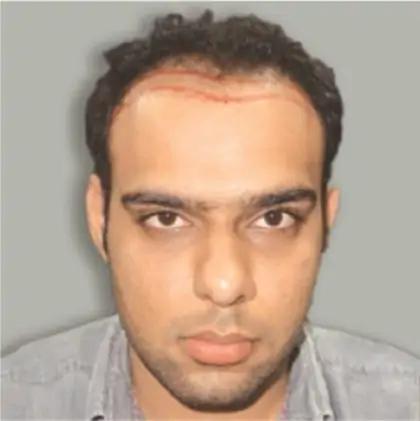Contents
- 1 Causes of Hair Loss in Men
- 2 Causes of Hair Loss in Women
- 3 Procedure
- 4 Norwood Classification
- 5 Other Surgical Procedures Available for Baldness
- 6 Non-surgical Procedures Available for Hair Loss
- 7 Recovery
- 8 Long Term Results
- 9 FAQ
- 9.1 As a man who is losing his hair what should I expect?
- 9.2 How much more hair loss should I expect?
- 9.3 I am a woman and feel like I am losing my hair. Is this possible? What should I expect?
- 9.4 What options do I have for treatment of my hair loss or my thinning hair?
- 9.5 What is a reasonable outcome of hair transplantation?
- 9.6 What is the recovery of hair transplantation?
- 9.7 Who is a candidate for hair transplantation?
- 9.8 Is hair transplantation done under local or general anesthesia?
- 9.9 I have very thin eyebrows. Can I have hair transplantation for my eyebrows?

The most common cause of hair loss is male pattern balding. Despite its name, this type of hair loss exists in both men and women. The reason it is called male pattern balding is because the hair loss is due to the effects of testosterone on the hair follicles. In some people, likely due to genetic predisposition, some hair follicles will wither and fall when they come in contact with a byproduct of testosterone. Since testosterone is found in a higher concentration in men, this type of hair loss is much more prevalent in men than women. However, 1 in 5 women will suffer from loss or thinning of their hair due to effects of testosterone.
We have also known for years that the hairs on our head that are along the horseshoe pattern are resistant to the effects of male hormones. That is why most balding patterns spare the hair in this region. We have also found that if we take the hairs from these areas and transplant them anywhere else on the scalp, they will grow and behave normally and continue to be resistant to effects of male hormone. This is the main scientific basis for hair transplantation.
Contents
- 1 Causes of Hair Loss in Men
- 2 Causes of Hair Loss in Women
- 3 Procedure
- 4 Norwood Classification
- 5 Other Surgical Procedures Available for Baldness
- 6 Non-surgical Procedures Available for Hair Loss
- 7 Recovery
- 8 Long Term Results
- 9 FAQ
- 9.1 As a man who is losing his hair what should I expect?
- 9.2 How much more hair loss should I expect?
- 9.3 I am a woman and feel like I am losing my hair. Is this possible? What should I expect?
- 9.4 What options do I have for treatment of my hair loss or my thinning hair?
- 9.5 What is a reasonable outcome of hair transplantation?
- 9.6 What is the recovery of hair transplantation?
- 9.7 Who is a candidate for hair transplantation?
- 9.8 Is hair transplantation done under local or general anesthesia?
- 9.9 I have very thin eyebrows. Can I have hair transplantation for my eyebrows?
Causes of Hair Loss in Men
In men, the most common cause of hair loss is through a process called androgenic alopecia. Androgenic alopecia is the scientific name for male pattern baldness. Essentially, the biological reason behind this is the interaction of the hormone testosterone (which is found in females in small amounts) with the hair follicles that are typically in the forehead and temple regions. Exposure of testosterone to these follicles causes thinning of the hair and eventual loss of hair in mainly the forehead and temple region. The degree of hair loss is mostly dependent on the genetic predisposition of the hair follicles.
Causes of Hair Loss in Women

In women, much like in men, the most common cause of hair loss is through a process called androgenic alopecia. Androgenic alopecia is the scientific name for male pattern baldness. Essentially, the biological reason behind this is the interaction of the hormone testosterone (which is found in females in small amounts) with the hair follicles that are typically in the forehead and temple regions. Exposure of testosterone to these follicles causes thinning of the hair and eventual loss of hair in mainly the forehead and temple region. The degree of hair loss is mostly dependent on the genetic predisposition of the hair follicles.
Procedure
Using NeoGraft our team will harvest individual hair units from the back of the scalp in a way that leaves no scar and no bald spot.
The follicular unit hair transplantation today is much different than the techniques of a decade or so ago. Today, using sophisticated devices such as NeoGraft there is no need for a strip of hair to be taken from the back area. This has significantly improve the recovery and the telltale sign of having had a hair transplant. In our practice, individual hair units are harvested using the latest technique to minimize down time and to essentially leave no scar behind.
Dr. Zandifar will then design your new hair line and each of these harvested follicular units will be carefully implanted in this new design like an artist carefully places paint on a canvas to create a masterpiece. The new implanted hair will grow of the next few months and eventually will look just like the rest of the hairs.
It can be cut, trimmed and colored normally with no visible sign of a procedure.
Hair transplantation can also be performed to treat scars over the areas of hair loss. It can also be used to make the eye brows fuller.
In fact hair transplantation for eyebrows is a great tool to improve the appearance of the eyebrows in a natural way.

Before hair transplantation
to the eyebrows

After hair transplantation
to the eyebrows
The procedure is typically done as an outpatient procedure under mild sedation with local anesthesia. Check out the below video for further detail.
Norwood Classification
Class I: Patient’s in this classification have no loss or thinning but genetically may be prone to hair loss therefore, early intervention with topical treatments may prevent any hair loss.
Class II: Patient’s in this classification have some loss along the hairline and temples. These patients usually have great results with oral and topical treatments. Some may even benefit from follicular unit hair transplantation.
Class III: This classification is defined by increased hair loss along the frontal and temple area and thinning of the hair volume along the vertex. Hair transplantation is the best choice for these patients.
Class IV: Patient’s in this classification have further loss of the hair line and the appearance of a bald spot along the vertex. The best treatment in this stage is again follicular unit hair transplantation.
Class V: Patient’s in this classification have further recession of the frontal and temple hairline and increased balding of the vertex. There may be a small island of hair between the frontal hairline and the vertex. Hair transplantation in the form of follicular unit hair transplant is the optimal treatment for these individuals
Class VI: The patient’s in this classification have sever hair loss with a horse shoe appearance. Follicular hair transplantation combined with scalp reduction techniques can improve the appearance in these patients. Some patient’s may consider artificial hair restoration such as a hairpiece.
Class VII: Patient’s in this classification have sever hair loss and only a thin horseshoe hair appearance. As of today the best treatment option for them is artificial hair restoration in form of a hairpiece.
Other Surgical Procedures Available for Baldness
Scalp Reduction
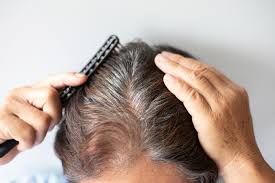
Scalp reduction is usually for patients who have class IV, V or even VI balding pattern, The procedure is usually done under local anesthesia and the area of the baldness is removed surgically and the surrounding hair bearing structure is moved in it’s place. This can result in significant improvement of hair loss. This technique is often done in a serial fashion, meaning it is done in multiple phases to allow for a better cosmetic outcome.
Flaps
Flaps are techniques that can relocate large area of hair bearing skin to areas of baldness. Various types of flaps exist to achieve the desired results. These are usually done under general anesthesia and have a longer recovery time than other procedures.
Forehead (Hairline) Reduction
This technique can result in frontal hairline lowering and improve the receding hairline. Many times women can significantly benefit from this procedure.
Non-surgical Procedures Available for Hair Loss
Yes there are several non-surgical procedures available. The degree of hair loss here dictates what treatments are available to you. Here are some of your available options.
Artificial Hair Restoration
Artificial hair (toupee or a wig) is essentially available to most patients who suffer from hair loss. Very similar to hair weaves that are worn by women, these artificial hair pieces can look very natural and achieve an acceptable cosmetic result. However, certain activities such as water sports and other sport, provide a unique challenge. In many instances these hair pieces would need to be removed to perform these activities. Also in the end the cost of maintaining a natural looking artificial hair piece can mimic or surpass the cost of getting hair transplant using the patient’s own natural hair.
Medications
Several prescription, herbal and over the counter medications are available to help with the balding scalp. There are also a few FDA approved medications that can help with hair loss. Typically, these medications are used in patients that have very little hair loss or are only noticing some thinning of their hair. As hair loss progresses, the efficacy of medications will diminish and there will be a need for other options such as hair transplantation.
Recovery

There is no major recovery for hair transplantation and most people can resume most activities right after the procedure. However, after the procedure and for about one week, the area of the new hair should be treated delicately. This will allow the new follicles time to establish blood supply and begin to take root in their new location. After about 10 days most normal activities can take place, however, there is some limitations to activities such as going to a spa or vigorously rubbing or scrubbing the hair. After one month no further care needs to be taken.
Long Term Results
The newly transplanted hair may at first be frozen in time and needs a few months to resume growth but typically at the end of a month the new hair will start to grow and continue to act like normal hair.
FAQ
As a man who is losing his hair what should I expect?
Loss or thinning of hair is a common complaint amongst men. In fact, it is not unusual to have patients complain of hair loss as early as 20 years of age. Approximately 2 out of 3 men experience hair loss to the degree that they would consider medical or surgical treatment.
How much more hair loss should I expect?
Dr. Norwood’s classification shows the natural progression of hair loss in men.
I am a woman and feel like I am losing my hair. Is this possible? What should I expect?
The short answer is yes. Although male pattern baldness is really the most common type of hair loss that is seen, about 1 in 5 women have experienced hair loss or baldness that they would consider medical or surgical
treatment.
The most common complaint that women suffer from is thinning of their hair. This is usually pronounced in the forehead region. However, occasionally women can present with sporadic bald spots on their scalps.
What options do I have for treatment of my hair loss or my thinning hair?
The most effective treatment for hair restoration is hair transplantation using patient’s own hair.
What is a reasonable outcome of hair transplantation?
Hair transplantation especially the follicular unit technique using the Neo-Graft device will harvest hair from the back of the scalp where it is resistant to the effects of hormone and relocate them to the balding areas of the scalp. With this technique you can expect a natural and normal hair growth where there was little to no hair.
What is the recovery of hair transplantation?
With the Neo-Graft follicular unit technique there is very little recovery time and most patients can return to work within a few days.
Who is a candidate for hair transplantation?
Most people experiencing baldness, hair loss or thinning of the hair are a candidate for hair transplantation. Based on the patient’s age, pattern of baldness, medical and genetic history the best option is usually chosen for the patient.
Is hair transplantation done under local or general anesthesia?
Follicular unit transplantation is usually done under local anesthesia. For patient’s who are nervous about the procedure, they can take oral sedatives on the morning of the procedure.
I have very thin eyebrows. Can I have hair transplantation for my eyebrows?
The answer is definitively yes. In fact, hair transplantation for the eyebrows is the only way to achieve a natural looking and fuller eyebrow. The new eyebrow can be trimmed and shaped just like normal and looks completely natural. The cost of hair transplantation for the eyebrows is also very comparable to a few sessions of microblading but only requires one session.










